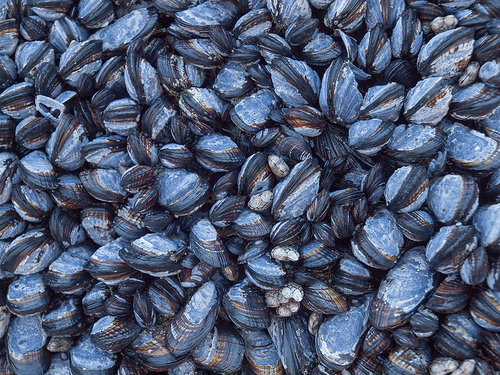Don’t go picking any random mussel off the street, or in this case, the rocks.
- Mussels are a groups of molluscs that are found in both salt and fresh water environments, and they are roughly symmetrical.
- The term ‘mussels’ is most commonly applied to the family Mytilidae, a family of saltwater species; and the molluscs are from the class Bivalvia, the class of bivalve molluscs.
- Mussels can grow to be 4 to 15 centimetres (1.6 to 6 inches) in length, and are typically taller than wider.
- The shell of a mussel is frequently a dark colour, like brown, blue or black, and it is also three-layered, in two halves, and is connected at a hinge; while the internal creature has a ‘foot’ that is a muscle-like organ, used to drag the mollusc along surfaces.
- The diet of mussels consists of tiny aquatic animals such as plankton, which can affect the mollusc’s toxicity, and their food is caught using their water filtering system.
Mussels
Image courtesy of Franco Folini/Flickr
- Fresh water mussel larvae fasten themselves to fish once born, and using the host’s excreted chemicals they create a shell; and then detach from their host after the shell has been made.
- Around 17 species of mussel are considered suitable for consumption by humans, and China was the biggest producer of edible species in 2005, roughly totalling 40% of the worldwide production.
- Mussels are commonly eaten as seafood, and must be cooked while they are living, or only just dead, otherwise toxins can build, and cooking styles include smoking, roasting, steaming, boiling and frying.
- Mussels typically take 12 to 15 months to grow to a commercially acceptable size, which is approximately 4 cm (1.6 inches) in length.
- Mussels are a good source of phosphorus, iron and protein, and they are high in selenium, and extremely high in vitamin B12 and manganese.
Bibliography:
Mussel, 2015, Encylopedia.com, http://www.encyclopedia.com/topic/mussel.aspx
Mussel, 2015, Wikipedia, http://en.wikipedia.org/wiki/Mussel






